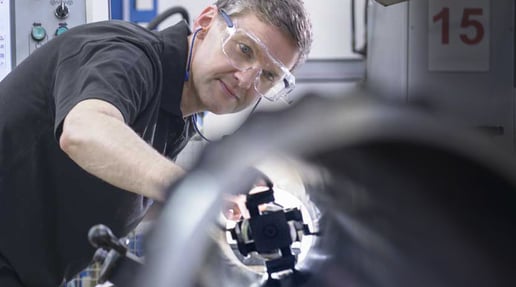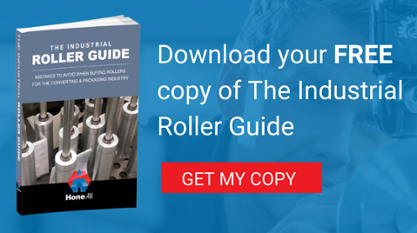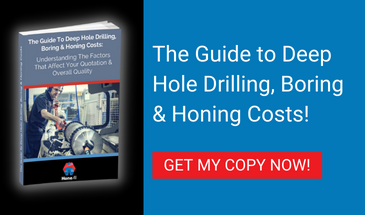
At Hone All Precision we provide a dynamic balancing service as part of the roller manufacturing services we offer our customers. Dynamic balancing is an important and frequently misunderstood part of the process, so we would like to spend this article briefly outlining what is involved and when you might need it.
What Is Dynamic Balancing?
Dynamic balancing uses purpose designed equipment to analyse the rotational speed and vibration level of an industrial roller. These measurements are compared to the desired operational parameters and changes made to the roller so that it is optimised to perform as expected.
A ‘balanced’ roller is one that can operate at any line speed, smoothly and without vibrations. Any roller can be balanced using the right equipment, with larger machines being used for larger rollers.
Types Of Roller Balancing
Dynamic balancing is one of two types of balancing service, the other being static balancing. The two approaches are used for different reasons. Static balancing takes place when the roller is stationary and is designed to address errors leading to rollover and loping. Dynamic balancing, on the other hand, takes place while the roller is working at its full operational line speed. The process quickly picks up signs that could point to major errors, such as excessive heat wastage, variable speeds or high vibration levels. If left unaddressed, these factors could seriously impact the application and lead to mechanical faults.
When Is Dynamic Balancing Needed?
For many manufacturers, dynamic balancing forms part of the inspection process at the final stage of manufacture. Older rollers can also be subjected to dynamic balancing to address any issues and refurbish. Also, some companies opt for a third party dynamic balancing service when they have purchased cheaper industrial rollers from a supplier overseas, to double check their quality and fitness for purpose. You should also consider dynamic balancing when re-covering a rubber coated roller. Packaging rollers are always balanced at their original weight, so when a new urethane coating is added, they should be rebalanced to operate correctly at line speed with their new weight.
Essentially, dynamic balancing is a fault fixing service and not a routine inspection. High quality rollers do not normally need dynamic balancing. Complete and accurate design drawings and a pre-balancing process normally ensure that rollers perform as expected. Furthermore, high quality rollers will maintain their performance over time, without the need for correction.
We only need to undertake dynamic balancing on about 5% of our precision rollers, but we do offer the service on request and have all the equipment on site to carry out a thorough job.
How It Works
Dynamic balancing takes place within a large balancing roller, linked to a balancing unit display screen. The roller is digitally scanned to show the precise angles and weights that cause the imbalance. Photocells in the balancing machine allow accurate measurements to be made at any line speed. From this data, simulations can be run that show the exact adjustments that need to be made for the roller to meet customer specifications. These new parameters can then be programmed into the balancing machine and the changes carried out under computer guidance, resulting in a rebalanced and extremely accurate roller.
Your Questions About Industrial Rollers Answered
Choosing the right industrial roller for your application is crucial to getting the results you need. Find out more about the process of sourcing industrial rollers in our Industrial Rollers Guide. This new, free e-book contains all you need to know about the process, including selecting the right materials, specs and performance criteria for your rollers. Click here to download your copy.





